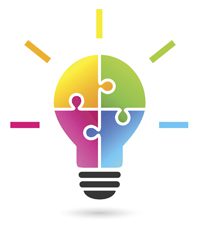Halcyon St. Hill, Ed.D., M.S., MLS(ASCP)CM, FASAHP, ASCLS Diversity Advisory Council Member
Diversity and inclusiveness are not just buzz words; they are terms that address the uniqueness of each individual and extend beyond our perceptions of each person. Perceptions are deeply rooted in our beliefs, values, and life experiences, and may lead to unprecedented judgements. Diversity, inclusiveness, and tolerance can only be fully understood by each of us when we discover the diversity first in ourselves and proceed to embrace the diversity of others. This article will address the meaning and importance of diversity and inclusiveness in the clinical laboratory.
Diversity can be broadly defined as the many ways that make each person different. Diversity is not simply based on physiognomies often marked by skin color, eye color, or race. Instead, it is a unification of age, height, race, gender, sexual orientation, acquired characteristics including beliefs, values, education level, and language that make each of us unique; diversity also incorporates national origin, religion, and one’s life experiences.
Inclusiveness embraces diversity by valuing the uniqueness of individuals and groups of individuals. For instance, in clinical laboratory practice, each person in the workplace is unique, as is every patient. None-the-less, as laboratorians we hold common professional beliefs and values, some of which are common to healthcare such as, ethical responsibilities and patient-centered care. We must, however, examine our beliefs, and as laboratorians, think about why another profession may have a perspective that we do not fully support. It is important for each and all of us to try to understand such differences, and reassess our position before solidifying our judgments.
A great and historic example is the initiation of rapid testing for HIV that allowed people who were not clinical laboratory technicians or scientists to perform that specific test. Initially, it seemed unprecedented to have persons perform HIV screening tests when they lacked the depth and breadth of education and practice experiences that clinical laboratory scientists and technicians held. The value of having HIV screenings done by others and confirmatory tests done by the qualified laboratorians was overshadowed. The latter example highlights the importance of examining professional values that focus on the greater good for patients/clients’ benefits, along with the appropriateness of overseeing procedures that are relevant to laboratory standards of practice. It also raises the importance of knowing and recognizing one’s own diversity, recognizing each other’s diversity, and using that knowledge to become conscious of our biases and more inclusive and accepting of the diversity among others – i.e. each of us must be “tuned in.” Typically, we do not recognize some of our major biases. Inclusiveness requires us to step back and look at situations and people from a broader and more comprehensive perspective for the greater good. Inclusiveness results in a more unified and productive environment and workplace. When everyone senses being heard and valued for her/his uniqueness, there is more open and often robust communication that leads to better solutions for any given problem or issue, and hence “tuning in” occurs.
It is imperative to understand ourselves, our biases, and how to embrace diversity by personifying inclusiveness among ourselves as professionals. It is also important to “tune in” to our clients’ diversity to provide quality cost-effective services. Diversity in the workplace requires us to determine and address institutional biases and acknowledge the richness and value of inclusiveness. This will result in a stronger work ethic, higher productivity, and better-quality laboratory services. A secret to success is embracing diversity and practicing inclusiveness, because “tuning in” is the understanding that “reciprocal relationships between human behavior and social environments are basic to human interaction among peoples of the world."

